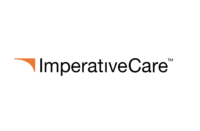Early Data Published in JNIS Showcases Safety and Technical Feasibility of Zoom RDL Across a Range of Neurointerventional Procedures
CAMPBELL, Calif.–(BUSINESS WIRE)–Imperative Care, a medical technology company developing connected innovations to elevate care for people affected by stroke and other ischemic diseases, today announced the publication of early clinical data in the Journal of Neurointerventional Surgery (JNIS) from a single-center evaluation of the Zoom™ RDL Radial Access System.
Zoom RDL is the company’s latest innovation and the first radial access platform developed specifically for ischemic stroke treatment. Zoom RDL provides neurointerventionalists with an alternative option to femoral access to treat their stroke patients, helping to enable the best possible outcome based on an individual patient’s anatomy. With an extended hydrophilic coating, optimized dilator and a long distal flexible segment, Zoom RDL is designed to provide .088” intracranial access, which has been shown to lead to faster and better reperfusion in stroke procedures.1
Data from the independent, retrospective single-center evaluation of Zoom RDL in 29 patients who underwent neurointerventional procedures from October 2022 to January 2023 were published in a paper titled, The Zoom RDL radial access system for neurointervention: An early single-center experience. Results from the evaluation, conducted by Tareq Kass-Hout, M.D., Rami Morsi, M.D., Harsh Desai, M.D., Sonam Thind, M.S.N., and other leading neurointerventionalists at the University of Chicago Medical Center, indicated the Zoom RDL Radial Access System is technically feasible and effective for complex neurointerventional procedures with low complication rates.
As part of the evaluation, Zoom RDL was used in a range of neurointerventional procedures, with 31% (9/29) of these cases being stroke thrombectomies. The primary outcome measure of the evaluation was successful access of the target vessel without the need to convert to a different guide catheter or transfemoral access. Results showed that access success was achieved in 90% (26/29) of cases, and in 100% (9/9) of stroke patients, with most cases resulting in TICI 2c reperfusion or better within one pass (67%, 6/9). There were no access site or product-related complications reported. There were two procedure-related complications, including one intracerebral hemorrhage and one intraprocedural thrombus formation.
“Adoption of transradial access for neurointerventional procedures is at an early phase with the need for additional data supporting its use. One reason behind limited adoption of transradial access, especially in mechanical thrombectomy, has been the lack of a purpose-built access catheter,” said Dr. Tareq Kass-Hout, M.D., lead author of the paper and Director of Neuroendovascular Surgery at University of Chicago Medicine. “Zoom RDL fulfills this need as the first radial access catheter platform built specifically for stroke, with an inner diameter that accommodates large bore aspiration catheters and the provided ability to navigate the intracranial ICA from the radial artery.”
“We are pleased to see early evidence support the use of Zoom RDL in helping physicians successfully achieve radial access in patients who might not be candidates for femoral access,” said Ariel Sutton, General Manager of Imperative Care’s Stroke business. “Our patient-first portfolio includes two options for intracranial access, Zoom 88 for femoral access and Zoom RDL for radial access, empowering clinicians to choose the best option for their patients based on their anatomy. We look forward to future results that underscore the value of the Zoom Stroke Solution in helping physicians take more control over their stroke thrombectomies for quicker, more efficient procedures.”
About the Zoom Stroke Solution
The Zoom Stroke Solution is the complete stroke system from access through reperfusion for fast and effective clot removal for patients with acute ischemic stroke. The system includes the Zoom 88 Large Distal Platform for neurovascular access, four vessel-matched Zoom Aspiration Catheters, the Zoom Pump, the Zoom POD and accessories. All Zoom catheters are designed with the TRX™ Tip which provides 15% greater clot engagement area at the tip of the catheter2 and are designed to enable smooth tracking through challenging vasculature. For complete product information, including indications, contraindications, warnings, precautions and adverse events visit:
About Imperative Care, Inc.
Imperative Care is a commercial-stage medical technology company researching and developing connected innovations to elevate care for people affected by devastating vascular diseases such as stroke and pulmonary embolism. The company has four businesses focused on addressing specific gaps in treatment and care to make an impact across the entire patient journey. Imperative Care is based in Campbell, Calif. https://imperativecare.com.
1. Milburn J, Vidal G, Gulotta P, et al E-240 Intracranial large bore guide catheter placement is associated with excellent reperfusion; a single institution experience Journal of NeuroInterventional Surgery 2022;14:A210
2. Vargas J, Blalock J, Venkatraman A, et al Efficacy of beveled tip aspiration catheter in mechanical thrombectomy for acute ischemic stroke Journal of NeuroInterventional Surgery 2021;13:823-826.
Dr. Tareq Kass-Hout is a paid consultant of Imperative Care.
Contacts
Investor Contact:
Matt Garrett, CFO
Imperative Care, Inc.
408-476-1672
mgarrett@imperativecare.com
Media Contact:
Lara Lingenbrink
Imperative Care, Inc.
858-525-1414
llingenbrink@imperativecare.com






